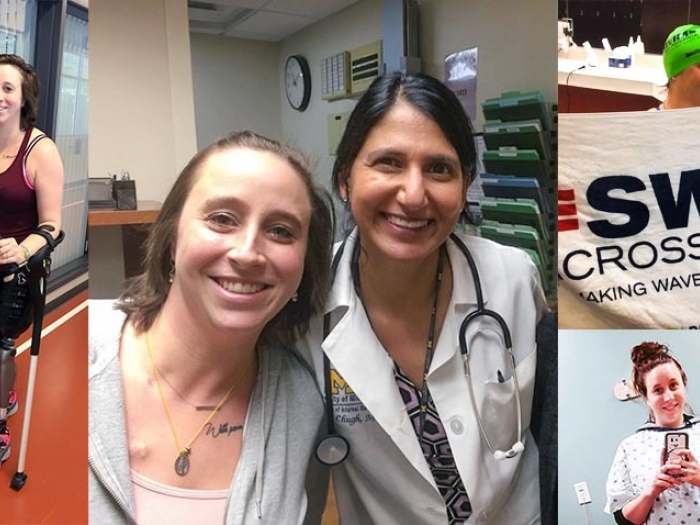Independent communications professional Shelley Zalewski brings more than 25 years of experience to her assignments for the U-M Health System. A former director of marketing communications for the U-M Comprehensive Cancer Center, Shelley develops multimedia content used in patient education, physician-targeted communications, institutional advancement and branding. Recent assignments include clinical and research content related to cancer, neurosciences, cardiovascular medicine and mental health, as well as policy messages on behalf of the U-M Institute for Healthcare Policy & Innovation.
Contact information


Health Lab
Research confirms that strengthening the body’s core can help prevent injuries or reducing their severity. New research from Michigan Medicine is exploring whether the same may be true for strengthening the neck to protect against head injuries.

Health Lab
Although numerous safeguards are in place, there is a small chance that a potential organ donor can have an undetected infection such as Hepatitis B, C or HIV, and pass that infection on to a transplant recipient.

Health Lab
The human liver can regenerate, making living donor liver transplants possible. Michigan Medicine’s Transplant Center is one of only a few in the country offering this option.

Health Lab
MedSport female providers tailor sports injury care to their female patients, and educate athletes, parents and colleagues in sports medicine.

Health Lab
From early stage colon cancer to advanced metastatic disease, Jennifer Watson’s cancer journey illustrates the importance of advocating for your health and partnering with a care team you trust.

Health Lab
Key guidance on enrolling in sports during the pandemic and how to handle returning after a COVID-19 diagnosis.

Health Lab
MedSport Athletic Trainers on the field means early mobilization of health care resources for injured athletes.

Health Lab
Unexplained abdominal symptoms sidelined an otherwise healthy, active life. After countless failed attempts to find the cause, a chance introduction opened the door to answers and recovery.

Health Lab
For patients undergoing aromatase inhibitor treatment for breast cancer, muscle and joint pain can be a significant side effect. These tips may help manage AI treatment-related pain.

Health Lab
Once considered vital for early breast cancer detection, the breast self-examination is now optional for most women. A breast cancer expert explains what’s changed.

Health Lab
New video tutorials from Michigan Medicine’s Physical Medicine and Rehabilitation Program help patients with physical therapy and rehab from home.

Health Lab
COVID-19 has necessitated advances in telehealth in all sectors, and now that includes sports medicine and the 2020 National Football League (NFL) draft.

Health Lab
Beating cancer and recovering from a leg amputation imposed its own form of isolation on Kara Wolter, but now, ready to get back to her lifelong love of swimming, the COVID-19 pandemic has imposed new restrictions.

Health Lab
After a fetal diagnosis of hypoplastic left heart syndrome with restrictive or intact atrial septum (HLHS-IAS), surgery in utero saved Ryleigh Ostrander’s heart.

Health Lab
Cancer can bring with it a mix of emotional, physical, spiritual and practical concerns. Get tips and tools to help you identify, monitor and address distress as part of cancer treatment.